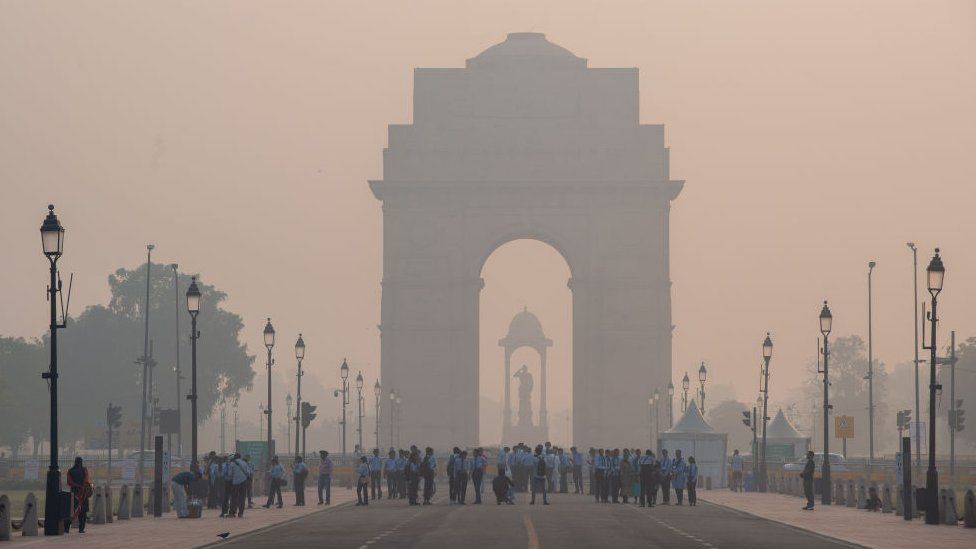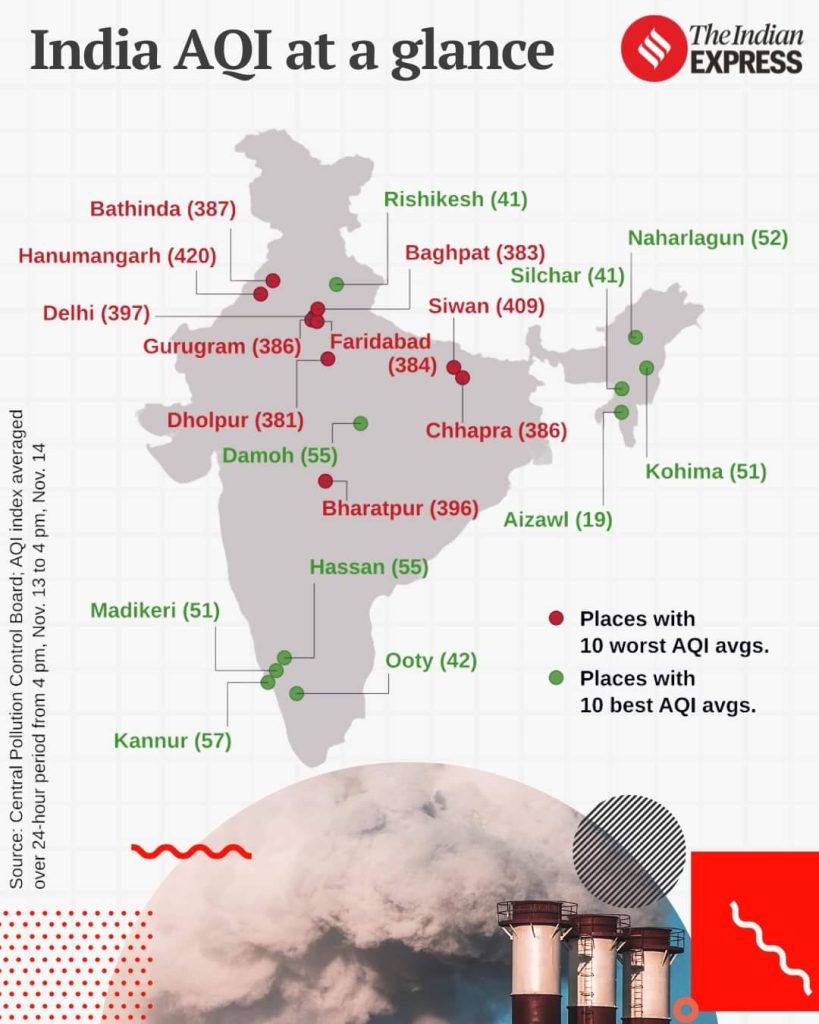- November 13, 2023
Reasons for Delhi’s severe Air Pollution (AQI>300) & Steps to Control

Air pollution has been a matter of environmental and health concerns, particularly in urban areas. In the recent years India’s Capital , New Delhi is suffering from severe Air Pollution .The Air Quality Index (AQI) in Delhi is recording more than 300 especially in the winter months and it is falling under severe category. It will create lot of health issues for the people and is very dangerous for children and senior citizens especially for those having breathing issues. Let us introspect what are the reasons and how to control.
REASONS FOR DELHI’S POLLUTION
The reasons for the air pollution in Delhi can be divided into three categories:
- Non-Local Sources:
- Stubble burning by farmers in rural states north of Delhi i.e Haryana and Punjab
- Dust storms from Rajasthan
- Local Sources:
- Air and dust pollution from open areas and Construction & Demolition
- Air Pollution from Diesel Generator Sets
- Industrial emissions
- Open Burning of garbage and waste on road sides, dumping areas & landfills
- Cooking from biomass
- Emissions generated from the Vehicular traffic
- Firing of crackers in Diwaali days
- Climatic factors which trap pollutants closer to the ground are:
- Falling temperatures in the winter months
- Low wind speeds
- Lack of rainfall
AIR QUALITY INDEX(AQI)-a tool for measurement of Pollution.
The National Air Quality Index’ (AQI) is the most widely used measurement to judge the quality of Air. Air Quality Index (AQI) is developed for effective dissemination of air quality information to people. The Index is, as ‘One Number- One Colour-One Description’ for the common man to judge the air quality within his vicinity. It is one of the initiatives under Swachh Bharat Mission.
The proposed AQI will consider eight pollutants (PM10, PM2.5, NO2, SO2, CO, O3, NH3, and Pb) for which short-term (up to 24-hourly averaging period).
- PM10 :Particulate matter (also called particle pollution): the term for a mixture of solid particles and liquid droplets found in the air. Some particles, such as dust, dirt, soot, or smoke inhalable particles, with diameters that are generally 10 micrometers and smaller;
- PM2.5 :Fine inhalable particles, with diameters that are generally 2.5 micrometers and smaller.
- NO2: Nitrogen Dioxide
- SO2: Sulfur Dioxide
- CO : Carbon Monoxide
- O3 : Ozone
- NH3 : Ammonia
- Pb : Lead
There are six AQI categories, namely Good, Satisfactory, Moderately polluted, Poor, Very Poor, and Severe.

Central Pollution Control Board along with State Pollution Control Boards has been operating National Air Monitoring Program (NAMP) covering more than 200 cities of the country. The AQI map of India as follows. 
Image Source: Indian Express.
HOW TO CONTROL
It is not instant and easy to control, but sustained efforts of all stake holders will give positive results. The ways to control are as follows:
- Following of directions and regulations issued by the Government from time to time
- Adhering to the Supreme court directions with regard to firing of crackers
- Finding the Solution to the stubble burning by involving Scientific community
- Controlling of open burning of garbage , waste in land fills etc
- Creation of Artificial rain in the city areas
- Finding of high intensity polluting industries and shifting them to non populated areas.
- Usage of Public transport by the Public and controlling of private vehicles as per odd/even numbers
- Improvement of urban forestry and developing of “Miyawaki forests” in the vacant areas.

